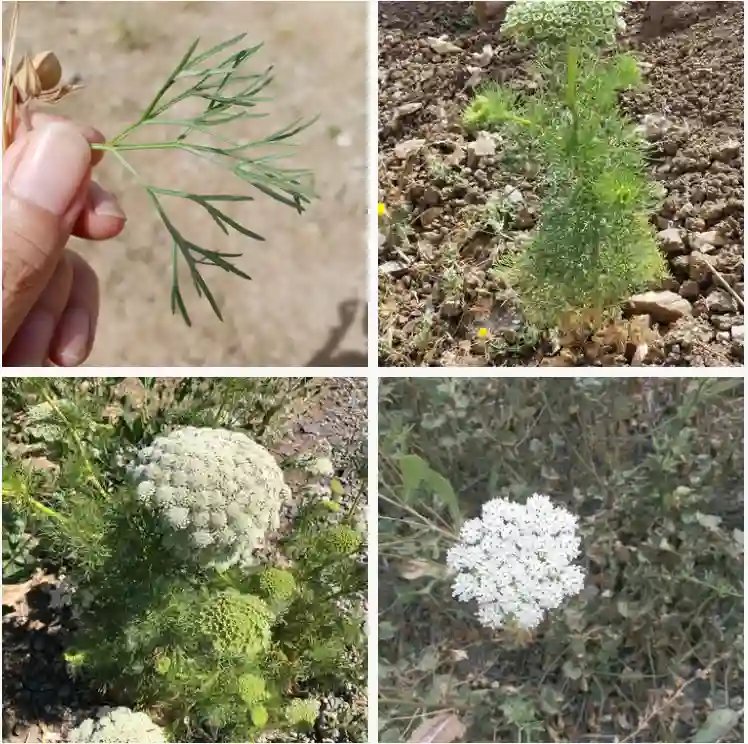
FAQs About Strawberry Begonia Plant
When I first encountered the Strawberry Begonia Plant, I was immediately drawn to its charming appearance. The cascading runners and round, fuzzy leaves give it an enchanting look. After growing and caring for this unique plant, I’ve had a chance to answer many of the common questions about it. Here are some FAQs and insights I’ve gathered along the way.
565 Species in Genus Saxifraga
What is the Strawberry Begonia Plant?
The Strawberry Begonia Plant (Saxifraga Stolonifera) is not actually a true begonia or related to strawberries. It’s a perennial that belongs to the Saxifragaceae family. Native to Asia, this plant gets its common name from the way it spreads via runners, much like a strawberry plant. Its small white flowers, shaped like stars, add to its charm, blooming in late spring or early summer.
One of the things I love about this plant is its versatility. It can thrive as both a houseplant and an outdoor ground cover in shaded areas. The leaves are green with a reddish underside and delicate veins, giving it a lovely contrast in any setting.
How to Care for the Strawberry Begonia Plant?
Caring for a Strawberry Begonia Plant isn’t difficult once you understand its needs. Here’s how I manage mine:
1. Light Requirements
Strawberry Begonia prefers bright, indirect light. When I grow mine indoors, I keep it near a north or east-facing window. Direct sunlight can scorch the leaves, so if you’re placing it outside, choose a shaded spot.
2. Watering
This plant enjoys consistently moist soil, but not soggy. I water mine when the top inch of soil feels dry. Overwatering can lead to root rot, so good drainage is essential. I also mist the leaves occasionally, as it enjoys some humidity.
3. Soil
A well-draining potting mix works best. I prefer a mixture of peat moss, perlite, and regular potting soil to keep the roots happy and healthy.
4. Temperature and Humidity
Strawberry Begonia thrives in temperatures between 60-75°F (16-24°C). It’s sensitive to cold drafts, so I keep it away from windows in winter. Moderate humidity is ideal, so if the air in my home gets too dry, I use a humidifier or place a tray of water nearby.
5. Fertilization
I fertilize my plant monthly during the growing season with a balanced liquid fertilizer. Avoid feeding during winter when the plant is resting.
How to Propagate the Strawberry Begonia Plant?
Propagating Strawberry Begonia is one of the easiest things to do. The plant naturally sends out runners, and these runners form small plantlets at their tips. Here’s my method:
- Propagation by Runners: I let the plantlets root while still attached to the mother plant. Once they have established roots, I carefully cut them off and transplant them into their own pots.
- Propagation by Division: Another method I’ve tried is dividing the plant at the roots during repotting. Each division will grow into a full plant if given proper care.
Both methods are simple and highly successful, making it a great plant for sharing with friends or expanding your collection.
What to Plant with Strawberry Begonia?
When planting outdoors, I like pairing Strawberry Begonia with other shade-loving plants. Ferns, hostas, and caladiums complement it well. The contrast between the bold foliage of hostas and the delicate runners of Strawberry Begonia creates a visually appealing garden bed. Indoors, I’ve found that grouping it with other houseplants like heucheras and pothos adds to the overall aesthetic.
How to Use Strawberry Begonia?
Strawberry Begonia is a versatile plant. Here’s how I like to use it:
- As a Hanging Plant: Indoors, it makes a beautiful hanging plant. The runners cascade down, creating a waterfall effect that adds a touch of nature to any room.
- As Ground Cover: Outside, it works well as ground cover in shaded gardens. I use it to fill in bare spots where other plants might struggle due to lack of sunlight.
- In Containers: This plant also thrives in containers. I’ve placed it in decorative pots on my patio, where it adds charm and fills in space nicely.
Is Strawberry Begonia Toxic?
One of the first things I checked before bringing Strawberry Begonia into my home was whether it was toxic to pets. Thankfully, this plant is considered non-toxic to cats, dogs, and humans. That said, I still keep mine out of reach of my curious pets just to be safe.
Common Problems and Solutions
Like any plant, Strawberry Begonia can encounter a few problems. Here are the issues I’ve faced and how I’ve dealt with them:
1. Leaf Yellowing
When I first started caring for my Strawberry Begonia, I noticed some of the leaves turning yellow. After some research, I learned that this was often due to overwatering. I adjusted my watering schedule, and the problem resolved itself.
2. Pests
Strawberry Begonia can sometimes attract pests like spider mites and aphids. I check my plant regularly and, if I spot any signs of pests, I treat them with insecticidal soap or neem oil.
3. Root Rot
Root rot can be a problem if the plant is kept too wet. I prevent this by ensuring proper drainage and not letting the plant sit in water. If you notice mushy stems or blackened roots, it’s a sign to act quickly—repot the plant in fresh soil and cut back on watering.
Final Thoughts
The Strawberry Begonia Plant is a delightful addition to any plant lover’s collection. Its cascading runners, charming leaves, and adaptability make it a joy to grow. Whether you’re using it as an indoor hanging plant or outdoor ground cover, this plant brings a touch of nature’s beauty into your life. By following the right care guidelines, you’ll find it easy to grow and propagate, making it a long-lasting part of your garden or home.
If i die, water my plants!



